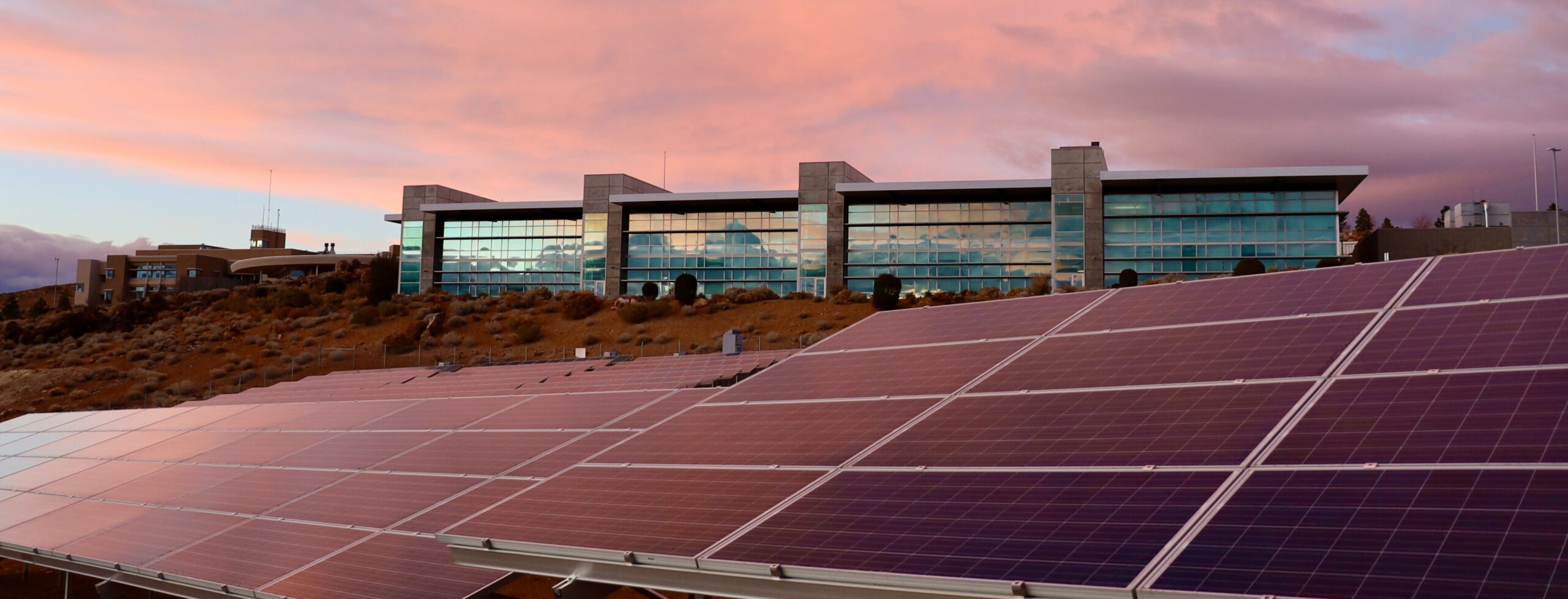IRENA’s World Energy Transitions Outlook, released last month, reported that significant progress in renewable energy was achieved over the past year despite the severe economic and human toll brought by the COVID-19 pandemic.
At the same time, the report by the International Renewable Energy Association highlighted that across multiple sectors, from buildings and transport to industry, systemic changes are needed to adjust the current energy consumption trajectory — a prediction in line with other leading energy research organizations.
The fate of energy-efficiency technologies and the shift to clean energy sources are also inextricably linked to the future of intelligent buildings. The emissions impact of the buildings sector, and the existing building stock in particular, make it a focal point of efforts to decarbonize electricity and make buildings healthier for their occupants and for the environment.
To take just one regional example: buildings account for the largest share of energy consumption (40%) in the European Union (EU) and contribute to over a third of greenhouse gas emissions. Energy efficiency policies such as strict building codes, support for building retrofits and appliance standards are critical to the energy transition in buildings that is needed today, IRENA’s report notes.
ASHB’s Intelligent Building Energy Management Systems (IBEMS) research similarly underscored that system-wide change and collaboration are necessary to modernize energy infrastructure and the built environment. And many of the priorities for modern IBEMS feed into precisely the types of “widespread innovation” that IRENA identifies as necessary to accelerate growth in renewable energy use.
“New technologies, materials, design and business models for net zero buildings’ construction will be required,” its yearly energy-change report card noted. “Smart energy management systems in buildings and digitalisation (the Internet of Things) will change how buildings consume energy and even allow them to start to provide grid services through enhanced demand flexibility.
“Decentralised energy supply will enable local generation of electricity through solar PV systems or other decentralised energy systems, and increasingly storage, both electric and thermal, will be found in buildings.
“To achieve this shift, enabling regulation and permitting will be required, as will reducing administrative and bureaucratic barriers. Utilities increasingly will need to reinvent themselves towards energy services and leverage the new markets related to the information from the grids.”
Even as the pandemic injected new uncertainties into the commercial building sector, energy transformation remained a crucial pillar of the intelligent building. ASHB’s research, which came out right at the end of 2020, highlighted that:
- Most advanced DER systems primarily generate and consume energy from photovoltaic sources, although wind, gas, bioenergy and hydroelectric sources are also increasing as energy sources consumed by buildings.
- A major shift in HVAC energy management requires innovation in areas like DER integration. Leveraging DER generation and storage capabilities, buildings can enable energy-efficient applications such as solar cooling, geothermal heating, and energy-efficient recirculation and reheating, by shifting DER loads to HVAC systems.
- GEB, or grid-interactive efficient buildings, are a key component — capable of providing flexibility in energy use and grid operation. To champion GEB, giving profile to sustainability, photovoltaic and energy storage system use cases has become especially important. The ability for a building to produce its own energy helps reduce its reliance on traditional utility energy sources, which are often carbon-based. In addition, some utilities allow buildings to transmit excess energy to the grid, which can lead to even greater cost savings for operators. Combining energy generation and storage technologies such as photovoltaics and storage with intelligent-building energy management systems is necessary for buildings to achieve grid interactivity.
ASHB’s research overall provided valuable data and insights into how intelligent-building ecosystem participants need to come together and collaborate on energy management best practices. Realizing that transition will ensure readier adoption of technologies that could significantly reduce energy consumption, surmounting barriers around cost and complexity.
While the full picture of this more robust coordination among market participants is still emerging, this much is clear: The path to the intelligent building of the future continues to wind through the energy revolution.
Industry players can get insights on facilitating a sustainable energy future from leading industry summits like EU PVSEC 2021 (European PV Solar Energy Conference and Exhibition), coming Sept. 6–10. EU PVSEC is being organized by ASHB member WIP Renewable Energies.


